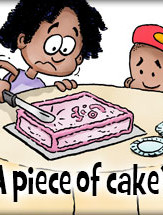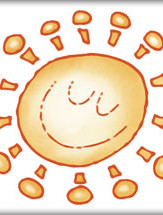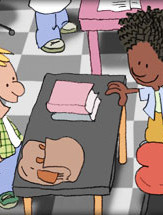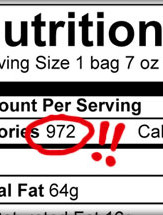 Have you ever been on a scavenger hunt? You know, that kind of game that elicits getting out of your chair, gathering a group of people, splitting that group of people into smaller groups of people, working up a list of nearly-impossible-to-find objects, then sending those people out into the world to query unsuspecting neighbors as to the inventory of their homes. We call it a game, but honestly, it’s probably more of an exercise for closet sociologists, given the subtle and not-so-subtle approaches of the players involved. “Hello. We are looking for a doll with one eye, an orange bottle cap, or a shock of your hair.”
Have you ever been on a scavenger hunt? You know, that kind of game that elicits getting out of your chair, gathering a group of people, splitting that group of people into smaller groups of people, working up a list of nearly-impossible-to-find objects, then sending those people out into the world to query unsuspecting neighbors as to the inventory of their homes. We call it a game, but honestly, it’s probably more of an exercise for closet sociologists, given the subtle and not-so-subtle approaches of the players involved. “Hello. We are looking for a doll with one eye, an orange bottle cap, or a shock of your hair.”
Scavenger hunts have been around for some time, but no one seems to know exactly how they came about. Believed to have evolved from ancient folks games, they found popularity in Paris and New York in the early 1930’s. One of the more flamboyant scavenger hunts belongs to the University of Chicago. Begun in 1987, the current version of the game boasts a budget of $3,420 and a list of 351 items (nineteen pages long).
Given that your school will probably not allow a scavenger hunt that has any budget whatsoever, asks teams to build a ten-foot bridge out of balsa wood and glue, or requires that they make a model of the Great Lakes from fire (see the New Yorker article by Patricia Marx), you’ll likely need to entertain other less liable versions of hosting a scavenger hunt for kids.
The rules of a scavenger hunt are pretty simple. Decide where to have your hunt (geographically speaking–backyard, school grounds, local park, etc.), decide what the prize will be, whether it’s a small toy, a gift basket, or a get out of timeout-free card (LOL!), and begin to make your list. Be creative! The best way to hold the interest of your scavengers is to ask for something they might not have expected.
Things can pretty much adapt to local conditions from here. You can make teams, or set the scavenger hunt as an individual assignment–though pooling talents will build relationships between your students and perhaps impress upon them the importance of collaboration. Another widely accepted rule of the hunt is that no item should be paid for or purchased in any way. Of course you should rule out petty theft, but encourage your students to be resourceful. I’ve personally been on scavenger hunts where I’ve promised to return items to their rightful owners once the game has commenced.
There are many ways to organize these types of games, but instead of falling in line with most every version of the game to date, why not change the rules a bit? Have you ever heard of a texture scavenger hunt? The rules are mostly the same, but students are asked to find objects with textures as opposed to defined objects.
Some of the items on your list can be things that are 1) grainy–such as sand or dirt or even laundry powder; 2) soft and fuzzy–as in a sock, a stuffed animal, or a cotton ball; 3) rough–as in sandpaper, an old baseball, or a dried-up slice of bread (inversely related to a new slice of bread that is quite soft); 4) smooth–as in a piece of paper, the bottom of a shoe that has been worn down from use, an apple, or even a simple plastic toy; 5) bumpy–as in bubble wrap, a piece of bark from a tree, or a small woven basket; 6) prickly or pointy–as in the bristles from a hairbrush, a cactus, a thorn from a bush or tree, or a cheese grater. (Would any of your students have a pet porcupine? Wait. Never mind.)
Set aside some space on a large table and label your categories. If you’re not comfortable picking winners, ask your charges for some help and put it up to a vote. Should you be looking for an alternative to having your students drag physical objects to the classroom, hand them a pad of Post-It notes and a crayon, and ask them to make rubbings of their textural findings.
Looking to win that coveted Teacher of the Year Award (from your students, not the school’s custodial staff–you’ll see)? Make one of the categories squishy–as in mud, shaving cream, or yogurt. Give extra credit to the students who will voluntarily stick their hands into each of the “finds.”
Perhaps one of your scavenger hunt items could be things that clean up messes. 😉
Teach. Learn. Enjoy!



